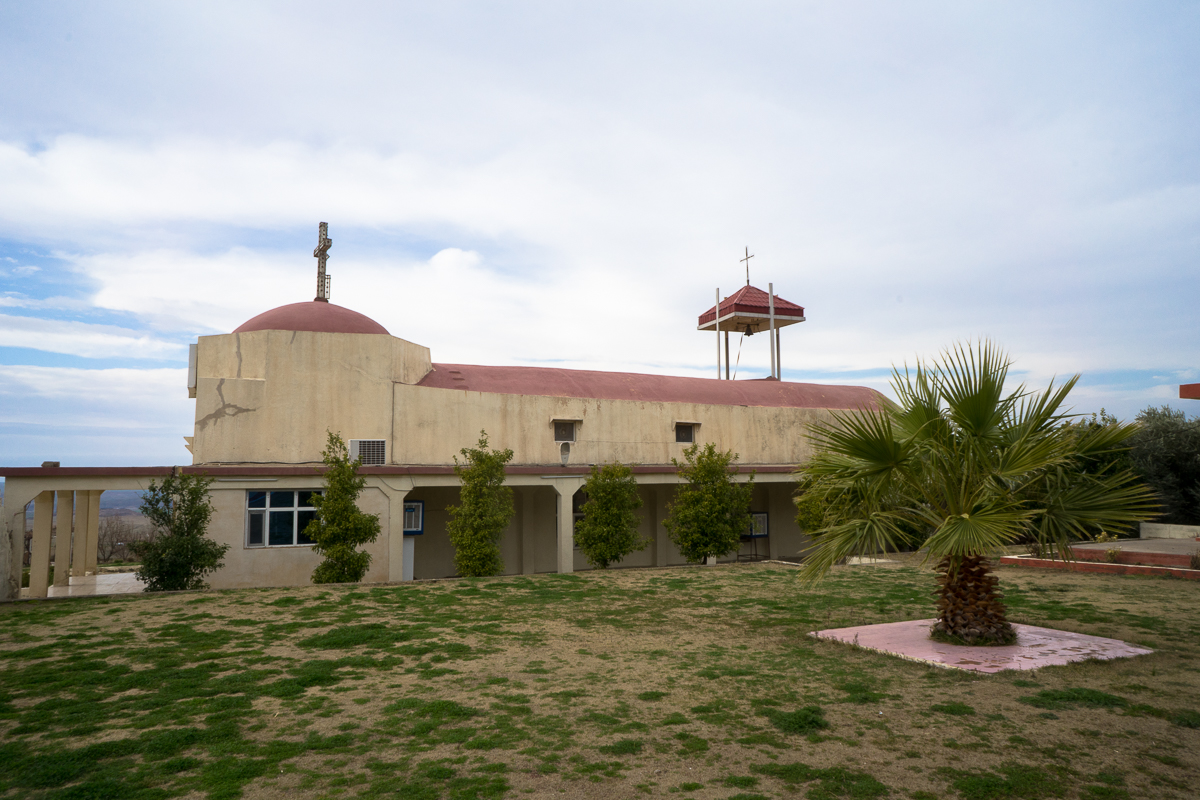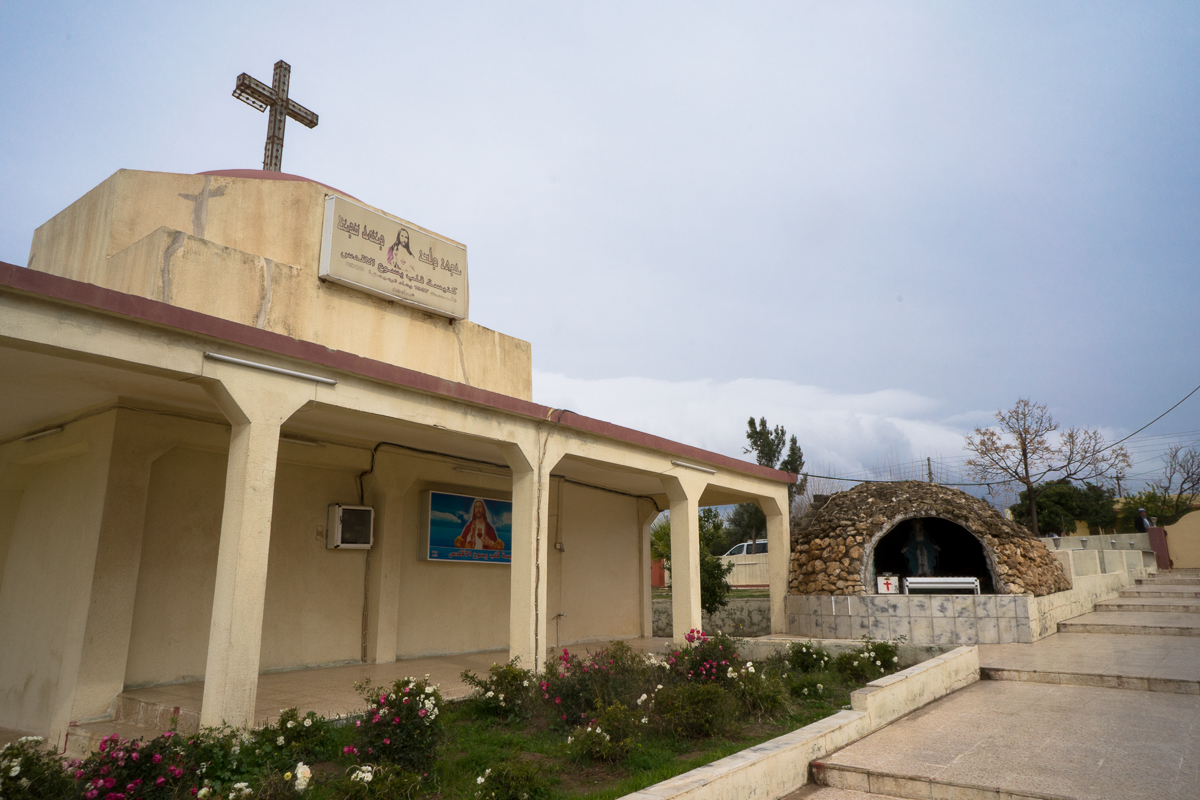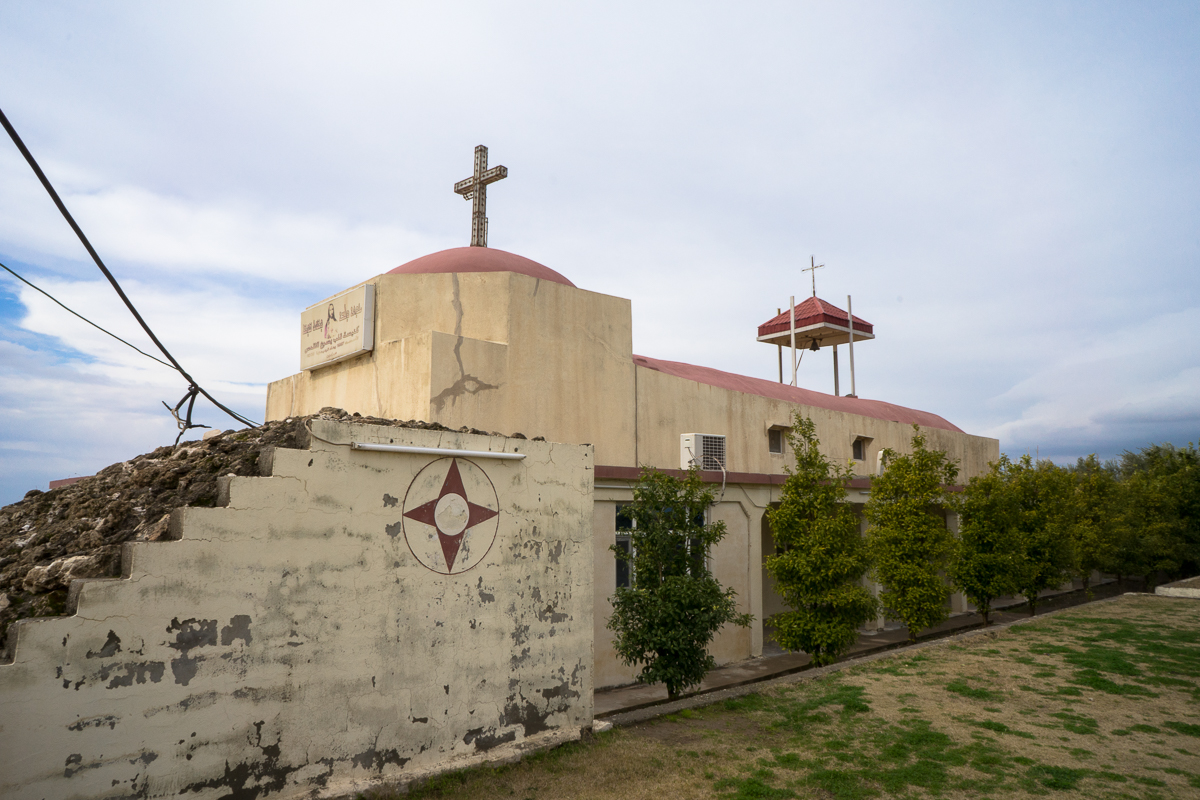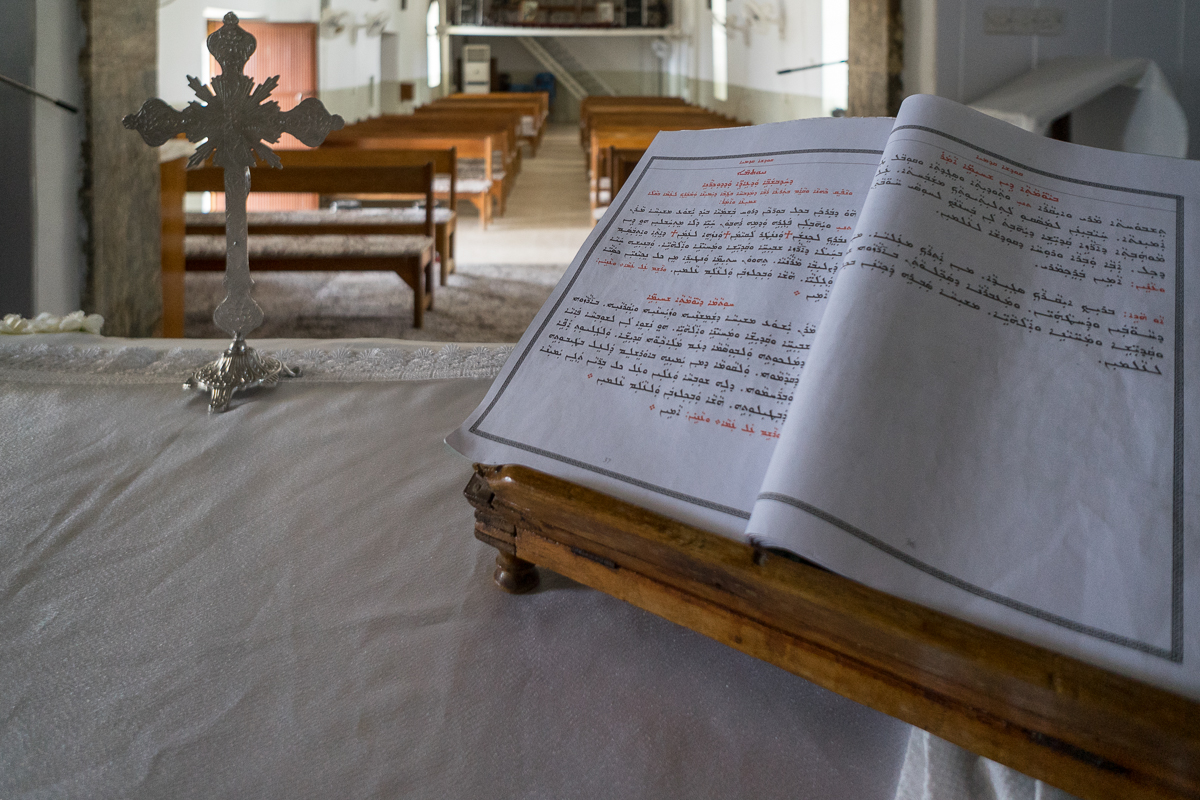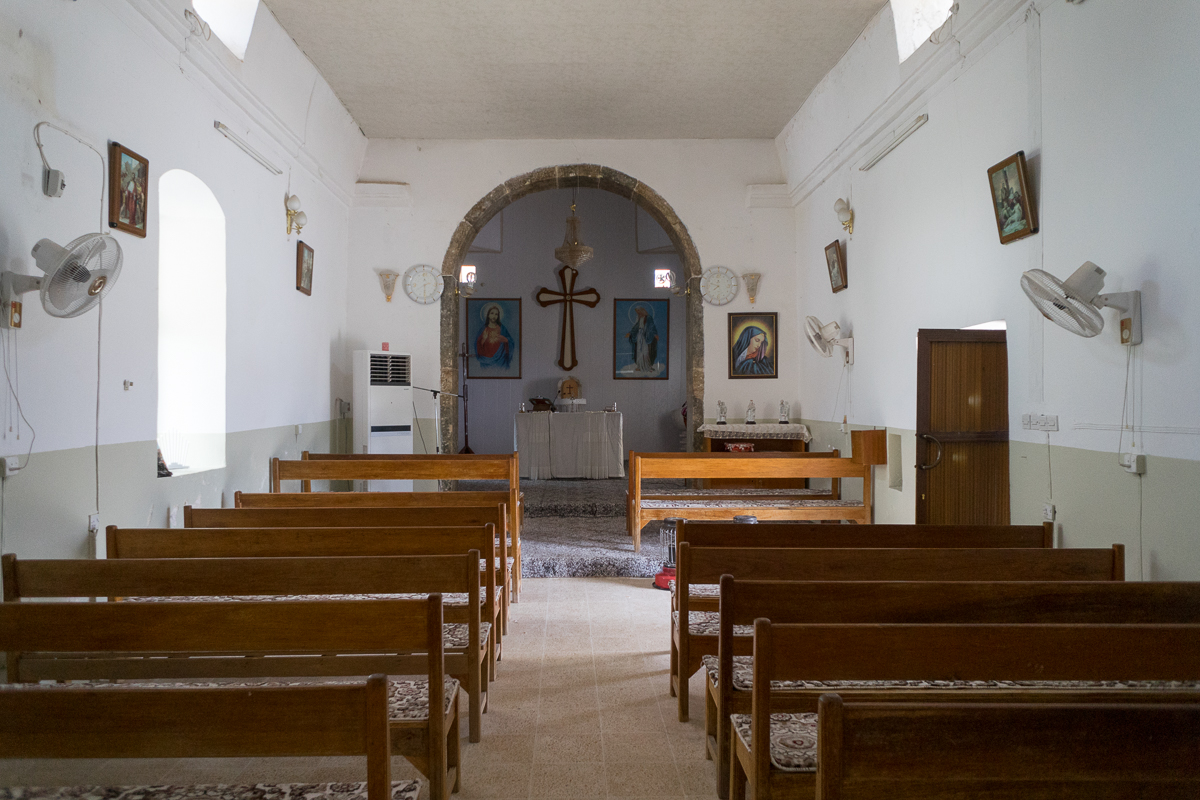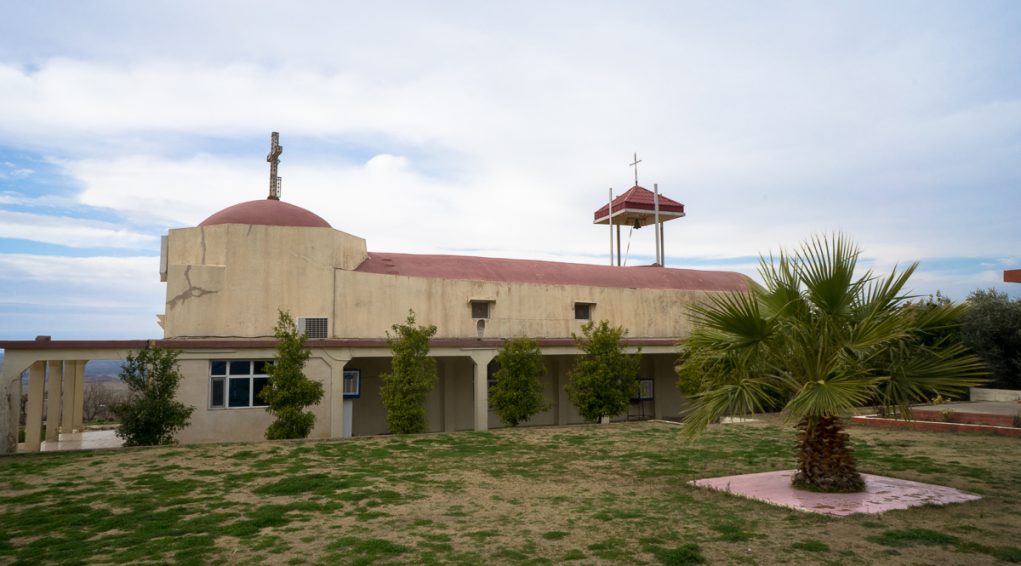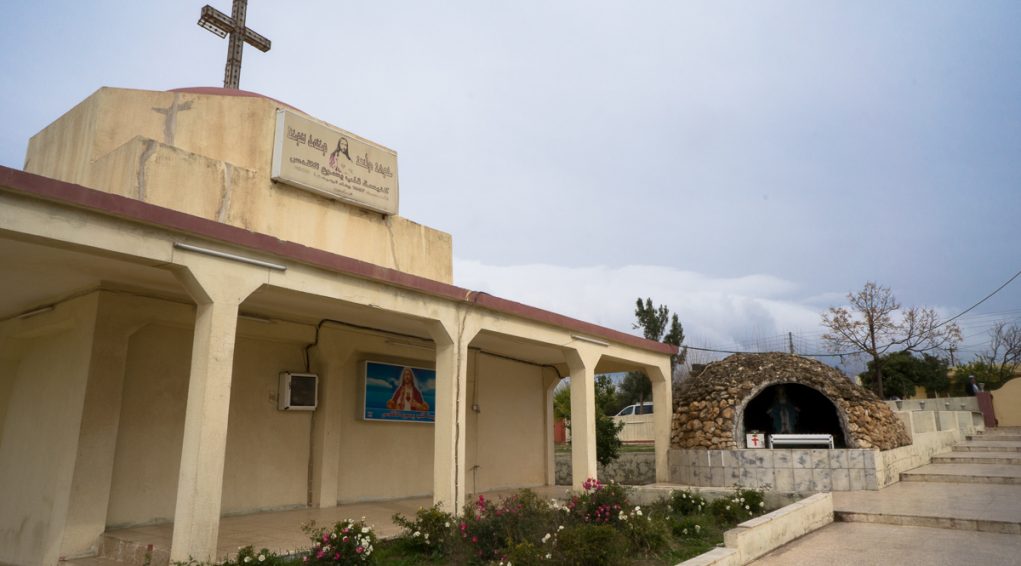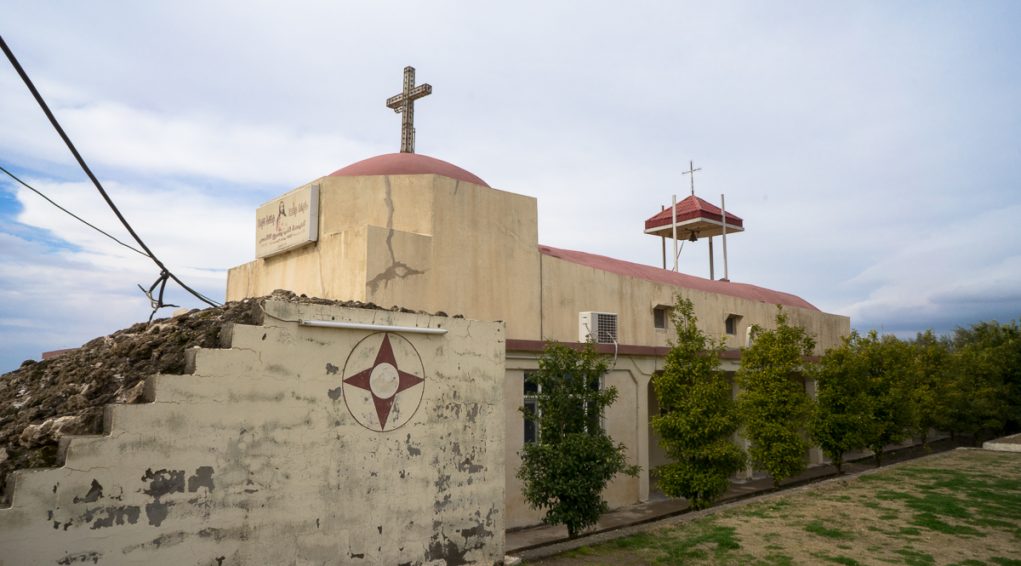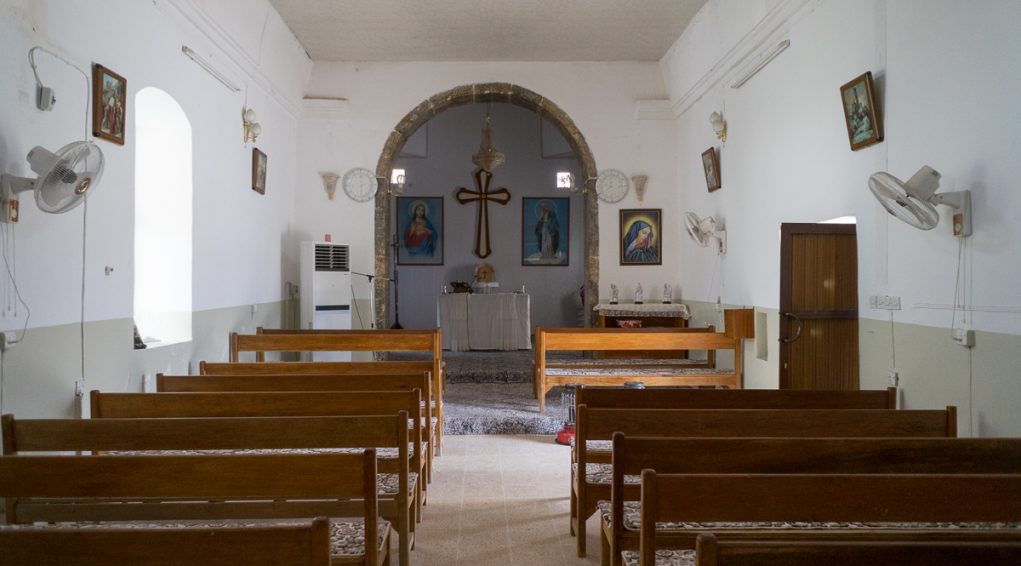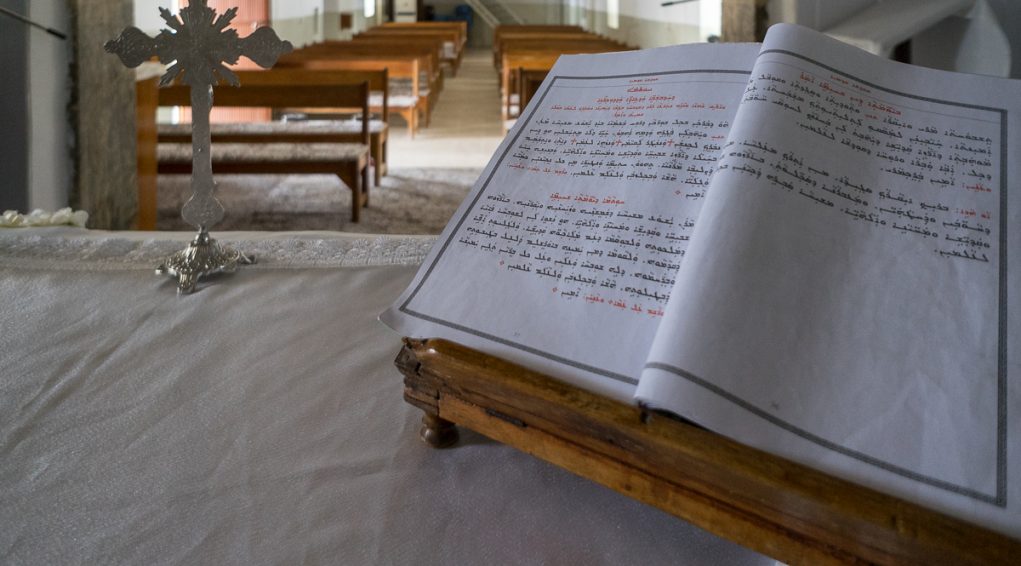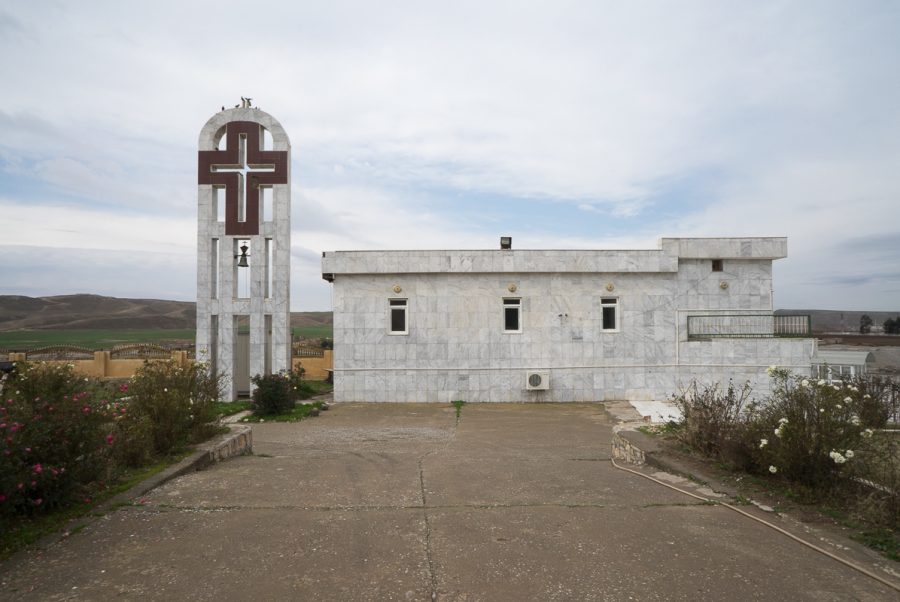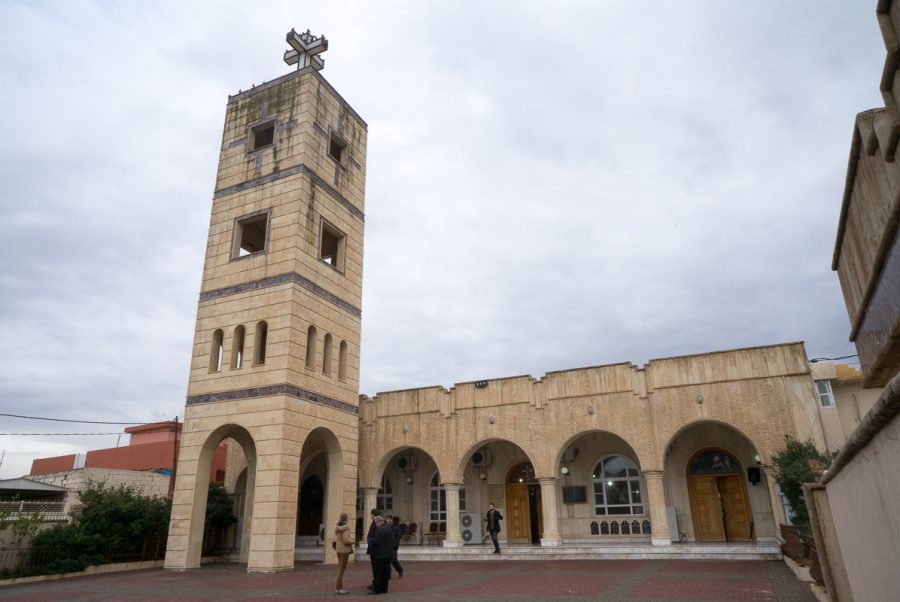Church of the Sacred Heart of Jesus in Deraboun
The church of the Sacred Heart of Jesus in Deraboun is located at37°05’07.3″N 42°25’18.9″E and 523 metres altitude, closed to the border with Turkey and Syria.
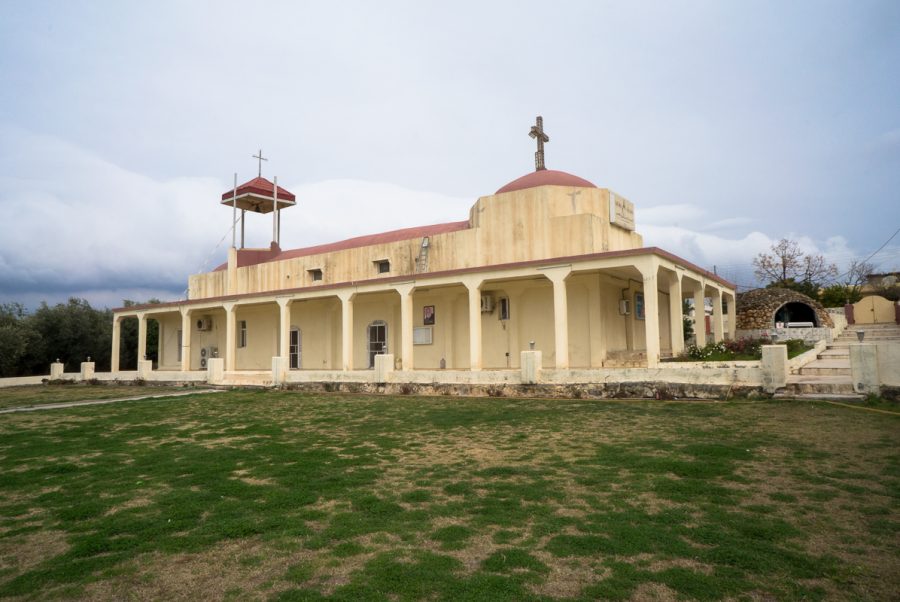
The village of Deraboun was rebuilt in 2005 for Chaldean families from Baghdad, Mosul and the Nineveh plain. In February 2017, 80 there were Chaldean families living in Deraboun. The name of the village, Deraboun means “monastery”(der)“of the father”(aboun)in Syriac. This confirms that there was a monastery here in the past, probably built in the 11th or 12th centuries, where there was a “large community of monks” in the 13th and 14th centuries of which no trace remain. It is probable that the church of the Sacred Heart of Jesus was built in 1937 on the site of the former monastery.
Pic: The Chaldean church of the Sacred Heart of Jesus in Deraboun. February 2018 © Pascal Maguesyan / MESOPOTAMIA
Location
The church of the Sacred Heart of Jesus in Deraboun is located at 37°05’07.3″N 42°25’18.9″E and 523 metres altitude, closed to the borders with Turkey and Syria.[1]
Deraboun is located in the far north-west of Iraq, close to the borders with Turkey and Syria. This small city is located just 5 kilometres from Faysh Khabur where the Tigris marks the border between Iraq and Syria. It is 19 kilometres west of the Ibrahim Khalil border crossing into Turkey, close to the city of Zakho, just 6 kilometres further east.
_______
[1]Deraboun is also known as Dayrabun and sometimes Der Bin.
Fragments of Christian history
The Christian history of Deraboun is very similar to that of other villages of the area. Pre-existing Jewish presence and early evangelization under the influence of apostles Thomas, Addai (can also be the apostle Jude, also known as Thaddeus in the Gospel) and Mari. Throughout a 4th century full of vocations, the tradition relates many stories of martyrs persecuted by the Persian king Shapur II. Throughout this period, hermitages and primitive sanctuaries developed, at the very same place where Assyrian churches and monasteries progressively raised. Throughout the centuries and until the fall of the Ottoman Empire, the valleys and the mountains which edge this part of Mesopotamia were a place of fulfilment and protection for the Church of the East, on both sides of the modern Iraq-Turkey border where catholic missions flourished from the 17th century onwards with a surge in the 18th century. The village of Deraboun turned to the Chaldean (Catholic) church, no doubt in the 19th century at the same time as the border town Faysh Khabur.[1]
This community and denominational unity collapsed at the end of the 19th and start of the 20th century with the multiplication of raids committed by Kurdish tribes against Christian villages, the genocide of the Armenians, Assyrians, Chaldeans and Syriacs in the Ottoman empire from 1915 – 1918, and the subsequent break up of the empire. During the genocide, the displaced populations passed through and settled in the village of Deraboun, part of the Ottoman vilayetof Mosul. This is why the inhabitants of Deraboun are of Turkish origin.
During all the rest of the 20th century, and although the Iraqi administration took the lead from 1921, the Chaldeans had no respite. From 1961 to 1991, the repeated bombing and fighting between Kurdish separatists and the government in Bagdad led to constant population displacements, from the villages to the major towns and vice versa. This included the Christian communities and had a major impact on Christian heritage. Dozens of Christian villages on the Syrian, Turkish and Iranian borders were bombed and razed to the ground. “The most ancient churches, some over ten centuries old, were destroyed.[2]” In the governorate of Dohuk-Nohadra, where Deraboun is situated, “if we say that if one hundred churches were blown up (the real figure is of course much higher) this would mean at least two hundred inscriptions would be lost.[3]” ISIS may not have reached Iraqi Kurdistan, but“the outcomes of the Saddam era were terrible for the Christian community in Kurdistan.[4]” In the second half of the 1990s, after the Gulf war and the progressive emergence of an autonomous Kurdistan, the Christians of Kurdistan returned to their home villages. This phenomenon intensified from 2003 onwards, with the fall of Saddam Hussein and the new wave of anti-Christian persecution by criminal, Islamicist groups. It was at this time that the village of Deraboun was repopulated with Chaldean families from Baghdad, Mosul and the Nineveh plain. A total of 150 houses were built with support from the Iraqi Kurdistan regional government. In February 2017, 80 Chaldean families were living in Deraboun.[5]
_______
[1]Faysh Khabur is also known as Fishkhabour.
[2]In Croissance, 1995, Chris Kutschera. https://www.chris-kutschera.com/chretiens_irak.htm. It should be noted that the Beidar (Bidar) church was renovated and is again used for services.
[3]In « Recueil des inscriptions syriaques », tome 2, Amir Harrak, Académie des inscriptions et belles lettres, 2010, p.533
[4]In « Le livre noir de Saddam Hussein », Chris Kutschera, Oh Éditions, 2005, p.398
[5]Data collected by Mesopotamia on 18 February 2018 from father Madhat Issac Bidawid, archpriest of Deraboun.
History of the church of the Sacred Heart of Jesus in Deraboun
The name of the village, Deraboun means “monastery” (der) “of the father” (aboun)in Syriac. This confirms that there was a monastery here in the past, probably built in the 11th or 12th centuries[1], where there was a “large community of monks[2]” in the 13th and 14th centuries of which no traces remain. There has been much discussion amongst researchers about the “father” to whom the monastery was dedicated. The tradition attributes this to the legendary patriarch Noah[3]. It is however most likely that the church of the Sacred Heart of Jesus was built in 1937 on the site of the former monastery. Local records do not state this specifically but this hypothesis cannot be disregarded. This would be compliant with Christian practices in terms of their heritage in Mesopotamia.
The construction of the church of the Sacred Heart of Jesus started in 1934 and was completed in 1937. Abandoned and reused as historic events dictated, the church was renovated in 2005-2007 when new Chaldean families settled in the village.
The archpriest of the church of the Sacred Heart of Jesus in Deraboun is Abouna Madhat Issac Bidawid. Originally from Baghdad, he lives in Zakho and serves three local parishes, Faysh Khabur, Bajid[4]and Deraboun.
_______
[1]In Les églises et monastères du “Kurdistan irakien” à la veille et au lendemain de l’islam, Narmen Ali Muhamad Amen, PhD thesis under the supervision of Georges Tate and co-supervision of Jean-Michel Thierry, May 2001. P.213.
[2]In Assyrie Chrétienne, vol II, Imprimerie catholique, Beyrtouth, J.M.Fiey, p.749-755.
Description of the church of the Sacred Heart of Jesus in Deraboun
The church of the Sacred Heart of Jesus in Deraboun is situated slightly below road level. It is surrounded by gardens to the south and the north and a presbytery to the north-east.
The church is around 23 metres long by 6 metres wide mounted with a barrel vault roof. It has a basic, modern bell tower to the west. To the east, above the sanctuary, a flattened hemispherical dome is supported by a windowless octagonal drum.
A gallery runs along the east, south and north sides of the church. To the north-east of the building is a reproduction of the cave of Lourdes, with a statue of the Virgin Mary inside.
The two entrance doors to the church are located on the south side under the gallery. The interior of the single nave church is particularly minimalist and plain. The old barrel vault has been transformed into a ceiling. The nave has a tiled floor and the sanctuary floor is carpeted. The walls are covered in a white coating.
A semi-circular arched door separates the nave from the sanctuary which contains a modest altar. The walls of the sanctuary are covered with prefabricated panels. Opposite the sanctuary on the west side of the building, a tribune has been added for the choir.
Monument's gallery
Monuments
Nearby
Help us preserve the monuments' memory
Family pictures, videos, records, share your documents to make the site live!
I contribute
